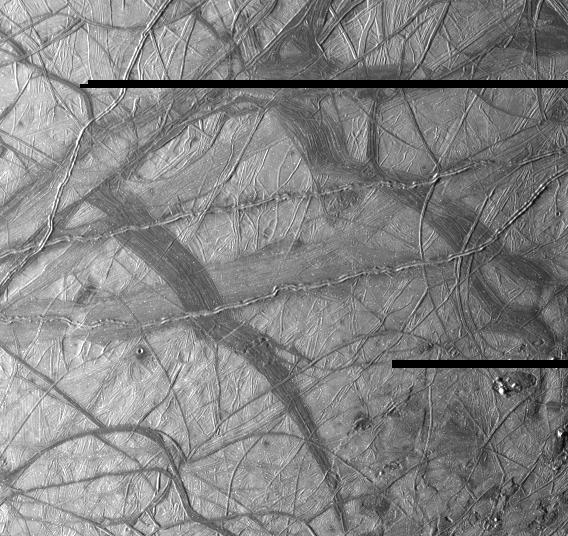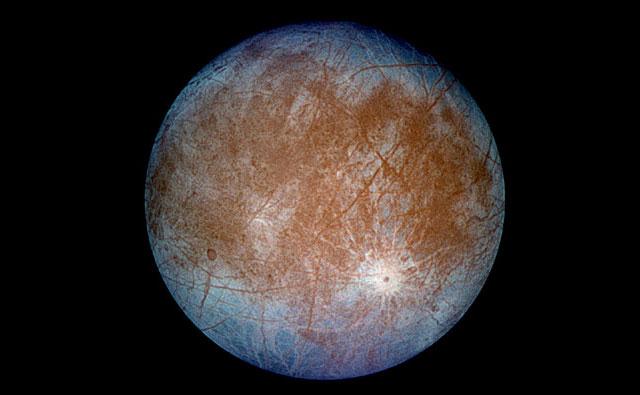
Geomorphic Features Of Europa
Overview
In 1610, Galileo Galilei observed Jupiter and found four objects which appeared to orbit the planet. These were later identified as the four largest moons of Jupiter, which are now referred to as the Galilean moons. Their order, from closest to furthest from Jupiter, is: Io, Europa, Ganymede, and Callisto. In 1979, the Voyager space craft passed Jupiter and took the first close-up pictures of the Galilean moons. The geology that was observed astonished astronomers. It was clear that these moons were very different from our own Moon.
Our Moon is a heavily cratered, geologically dead, body. Due to its small size, it has had enough time to sufficiently cool and is no longer geologically active. However, images of the Galilean moons show the opposite. Both Io and Europa are very geologically active bodies. Voyager images showed Io to be covered in volcanoes. In fact, it is the most volcanically active body in the solar system and is continually being resurfaced, causing a lack of craters to be observed. Detailed images of Io's surface are shown in Figure 1. The wide range of colors are due to large sulfur deposits originating from the volcanoes.

Figure 1. Io. Courtesy NASA/JPL.
Europa is quite the opposite of Io. It is covered in a thick shell of water-ice that encompasses the entire surface. Its density is ~ 3 g/cm3, suggesting the water-ice shell is ~100 - 150 km thick. This shell is likely liquid past a certain depth, which makes Europa a prime target in the search for for extra terrestrial life.
Like Io, there are very few craters present on the surface of Europa, indicating that it is a geologically active body possessing a "young" surface. The reason for its geolocial activity is due to a tidal forces exerted by Jupiter, Io, and Ganymede, which leads to stretching and flexing of Europa. This continual stretching and flexing causes tidal heating to occur, keeps the interior of the moon warm and creating many geomorphic features. Figure 2 illustrates ridges, bands, troughs, created by tidal stress. There is also a large range of colors observed, especially on the anti-jovian side of Europa, as seen in Figure 3. These colors represent different chemical compositions and likely occur from upwelling material beneath the ice shell.

Figure 2. Ridges, bands, and wedges on Europa. Courtesy NASA/JPL.

Figure 3. Europa. Courtesy NASA/JPL.
Several more space crafts have visited the moons of Jupiter since Voyager, including the Galileo space craft which sent back high-resolution detailed images of Europa's surface. These images are helping astronomers determine the geological activity responsible for the intriguing features seen around the moon which are described in following sections.
Tidal Heating
Craters
Ridges
Bands
Chaos
Astrobiology
Bibliography